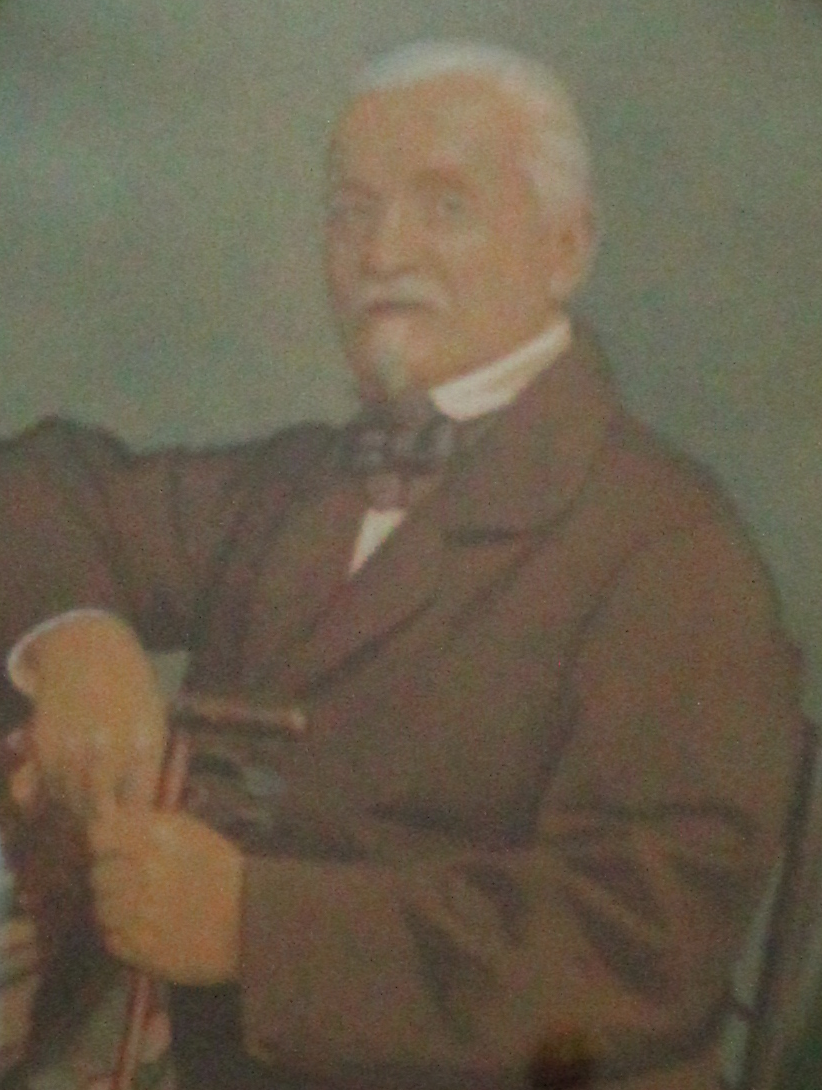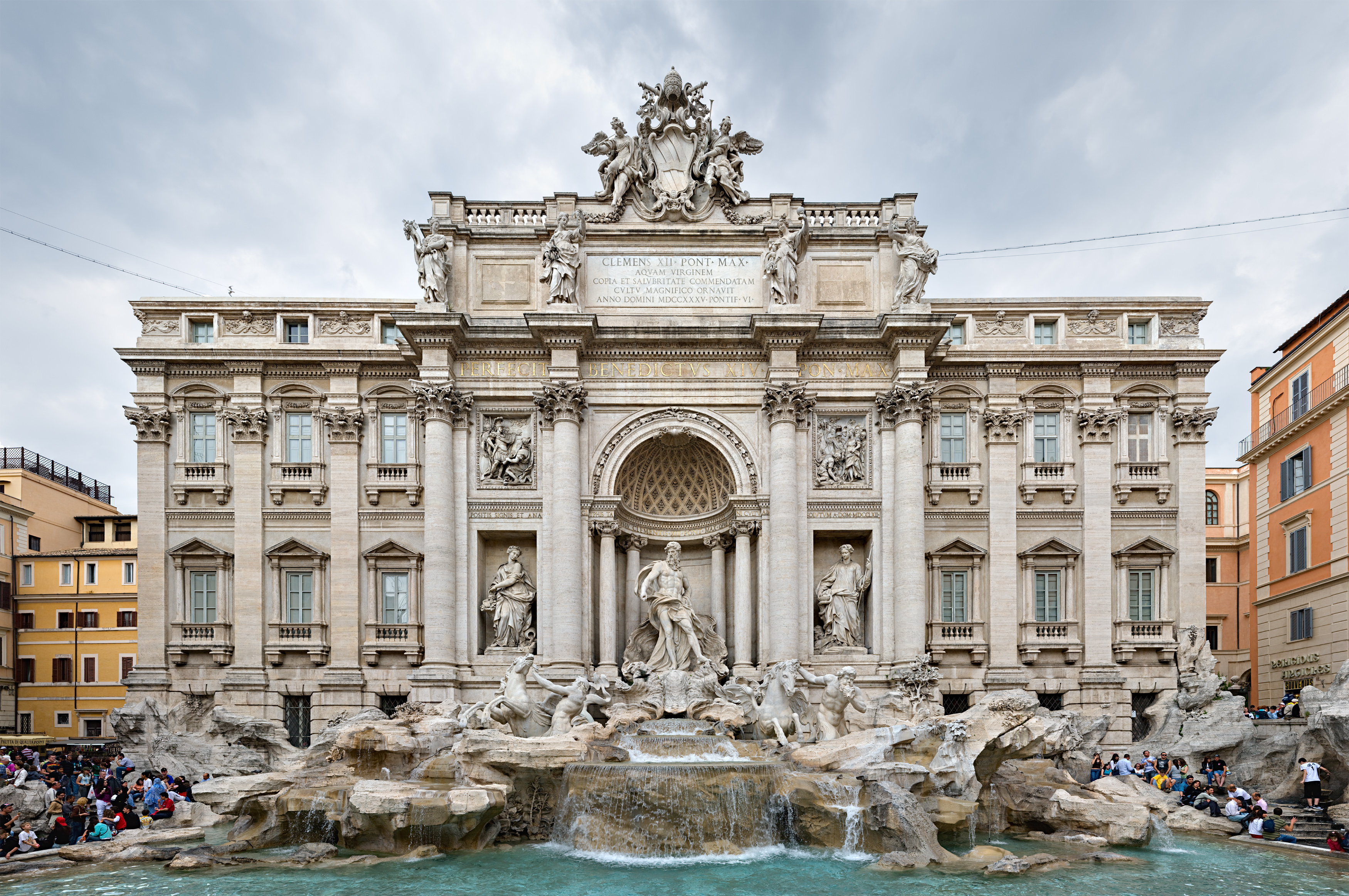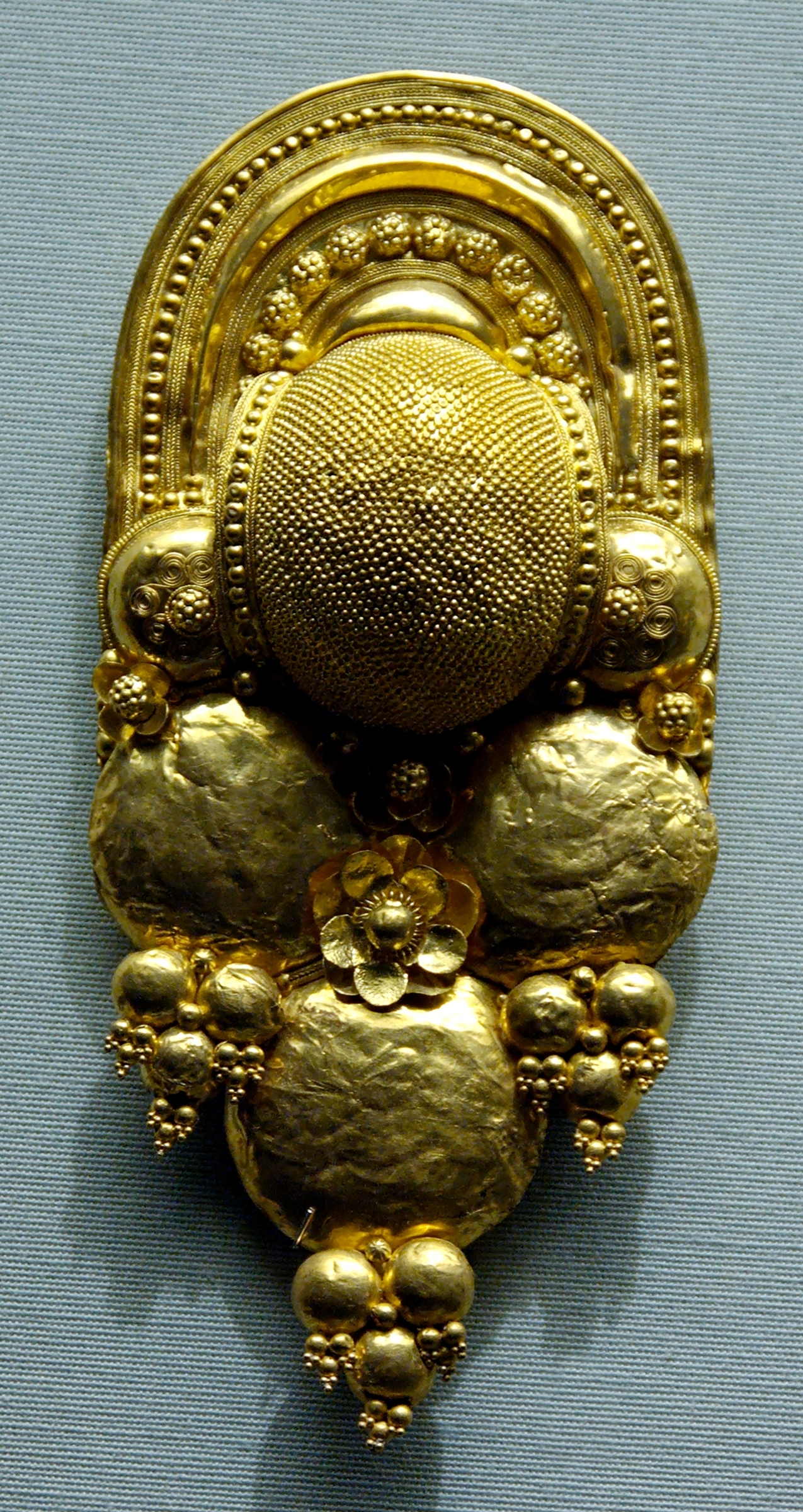|
Fortunato Pio Castellani
Fortunato Pio Castellani (6 May 1794 – 1 January 1865) was a 19th-century Italians, Italian jeweller and founder of Castellani, an Italian jewellery company. Castellani opened his first shop in Rome in 1814. Geoffrey Munn He specialised in recreating the jewellery of ancient craftsmen, particularly the Etruscans. Castellani based many of his designs directly on archaeological evidence and often incorporated Intaglio (jewellery), intaglios, cameo (carving), cameos and micromosaics into his jewellery. His work became very fashionable throughout 19th century Europe and his shop was frequented by grand tourists and aristocracy. The Castellani dynasty spanned three generations, and, were also noted antiquarians. Life Castellani opened his first workshop in Rome in 1815. Initially, his designs reflected the fashions of the day and were generally based on France, French and England, English jewellery of the period. However, in the 1820s, Castellani began to develop the style f ... [...More Info...] [...Related Items...] OR: [Wikipedia] [Google] [Baidu] |
Ritratto Di Fortunato Pio Castellani
A portrait is a portrait painting, painting, portrait photography, photograph, sculpture, or other artistic representation of a person, in which the face and its expressions are predominant. The intent is to display the likeness, Personality type, personality, and even the mood of the person. For this reason, in photography a portrait is generally not a Snapshot (photography), snapshot, but a composed image of a person in a still position. A portrait often shows a person looking directly at the painter or photographer, in order to most successfully engage the subject with the viewer. History Prehistorical portraiture Plastered human skulls were reconstructed human skulls that were made in the ancient Levant between 9000 and 6000 BC in the Pre-Pottery Neolithic B period. They represent some of the oldest forms of art in the Middle East and demonstrate that the prehistoric population took great care in burying their ancestors below their homes. The skulls denote some of the earlie ... [...More Info...] [...Related Items...] OR: [Wikipedia] [Google] [Baidu] |
France
France (), officially the French Republic ( ), is a country primarily located in Western Europe. It also comprises of Overseas France, overseas regions and territories in the Americas and the Atlantic Ocean, Atlantic, Pacific Ocean, Pacific and Indian Oceans. Its Metropolitan France, metropolitan area extends from the Rhine to the Atlantic Ocean and from the Mediterranean Sea to the English Channel and the North Sea; overseas territories include French Guiana in South America, Saint Pierre and Miquelon in the North Atlantic, the French West Indies, and many islands in Oceania and the Indian Ocean. Due to its several coastal territories, France has the largest exclusive economic zone in the world. France borders Belgium, Luxembourg, Germany, Switzerland, Monaco, Italy, Andorra, and Spain in continental Europe, as well as the Kingdom of the Netherlands, Netherlands, Suriname, and Brazil in the Americas via its overseas territories in French Guiana and Saint Martin (island), ... [...More Info...] [...Related Items...] OR: [Wikipedia] [Google] [Baidu] |
1794 Births
Events January–March * January 1 – The Stibo Group is founded by Niels Lund as a printing company in Aarhus (Denmark). * January 13 – The U.S. Congress enacts a law providing for, effective May 1, 1795, a United States flag of 15 stars and 15 stripes, in recognition of the recent admission of Vermont and Kentucky as the 14th and 15th states. A subsequent act restores the number of stripes to 13, but provides for additional stars upon the admission of each additional state. * January 21 – King George III of Great Britain delivers the speech opening Parliament and recommends a continuation of Britain's war with France. * February 4 – French Revolution: The National Convention of the French First Republic abolishes slavery. * February 8 – Wreck of the Ten Sail on Grand Cayman. * February 11 – The first session of the United States Senate is open to the public. * March 4 – The Eleventh Amendment to the United States Constituti ... [...More Info...] [...Related Items...] OR: [Wikipedia] [Google] [Baidu] |
Gemological Institute Of America
The Gemological Institute of America (GIA) is a nonprofit institute based in Carlsbad, California. It is dedicated to research and education in the field of gemology and the jewelry arts. Founded in 1931, GIA's mission is to protect buyers and sellers of gemstones by setting and maintaining the standards used to evaluate gemstone quality. The institute does so through research, gem identification and diamond grading services and a variety of educational programs. Through its library and subject experts, GIA acts as a resource of gem and jewelry information for the trade, the public and media outlets. In 1953 the GIA developed its International Diamond Grading System and the "four Cs" (cut, clarity, color, and carat weight) as a standard to compare and evaluate the quality of diamonds. Today, the institute is headquartered in Carlsbad, California and operates in 13 countries, with 11 campuses, 9 laboratories and 4 research centers. History The story of the GIA begins in the 1 ... [...More Info...] [...Related Items...] OR: [Wikipedia] [Google] [Baidu] |
Trevi Fountain
The Trevi Fountain ( it, Fontana di Trevi) is an 18th-century fountain in the Trevi district in Rome, Italy, designed by Italian architect Nicola Salvi and completed by Giuseppe Pannini and several others. Standing high and wide, it is the largest Baroque fountain in the city and one of the most famous fountains in the world. The fountain has appeared in several films, including ''Roman Holiday'' (1953); '' Three Coins in the Fountain'' (1954); Federico Fellini's classic, ''La Dolce Vita'' (1960); ''Sabrina Goes to Rome'' (1998); and ''The Lizzie McGuire Movie'' (2003). History before 1629 The fountain, at the junction of three roads (), marks the terminal point of the "modern" —the revived , one of the aqueducts that supplied water to ancient Rome. In 19 BCE, supposedly with the help of a virgin, Roman technicians located a source of pure water some from the city. (This scene is presented on the present fountain's façade.) However, the eventual indirect route of the ... [...More Info...] [...Related Items...] OR: [Wikipedia] [Google] [Baidu] |
Granulation (jewellery)
Granulation is a jewellery manufacturing technique whereby a surface is covered in spherules or granules of precious metal. The technique is thought to have its origins in Sumer about 5,000 years ago. This technique then spread to southern Europe during the orientalizing period, also through the role of Phoenicians, who had founded colonies in Sardinia, Sicily and Spain, or Near Eastern craftsmen. In the first millennium B.C. the technique was used by Etruscans living in present-day Italy. Greek craftsmen also employed the technique, but it was the work coming from Etruria which became famous, in part due to the mysteries surrounding the process. Methods This technique is notoriously difficult and mysterious in the jewelry world. So much that Ancient Greeks had young children place granules due to the extreme patience and near perfect eyesight needed to place each granule onto the base of the metal being fused. Granulation may be employed in three elaborate ways: the outline st ... [...More Info...] [...Related Items...] OR: [Wikipedia] [Google] [Baidu] |
Regolini-Galassi Tomb
The tomb known as the Regolini-Galassi tomb is one of the wealthiest Etruscan family tombs in Caere, an ancient city in Italy approximately north-northwest of Rome. The tomb dates to between 650 and 600 BC, most likely in the 640s BC. Based on the evidence of the tomb's architecture and its contents, it was built by a wealthy family of Caere. The grave goods included with the two decedents included bronze cauldrons and gold jewellery of Etruscan origin in the Oriental style. The tomb was discovered in 1836 in modern-day Cerveteri in an undisturbed condition and named after the excavators, general Vincenzo Galassi and the archpriest of Cerveteri, Alessandro Regolini. Both of these men had previous experience opening and excavating tombs in the area of Caere. The contents of the tomb were published in detail by Luigi Grifi in 1841. Description The tomb contains two burial chambers, located either side of a corridor long and wide. The lower portion of the tomb is cut into the t ... [...More Info...] [...Related Items...] OR: [Wikipedia] [Google] [Baidu] |
Sermoneta
Sermoneta is a hill town and ''comune'' in the province of Latina (Lazio), central Italy. It is a walled hill town, with a 13th-century Romanesque cathedral called Cathedral of Santa Maria Assunta and a massive castle, built by the Caetani family. The Cistercian Valvisciolo Abbey is located nearby. The churches of San Giuseppe (mainly 16th century) and San Michele (mainly 12th century) still stand. In the 13th-16th centuries, it was home to a flourishing Jewish community. Sermoneta is the hometown of the humanist Aldo Manuzio and eighteenth-century painter Antonio Cavallucci. Scenes of the 2007 film ''Silk'' featuring Keira Knightley were filmed in Sermoneta. The 2015 short film ''Italian Miracle'' was filmed in the town. In 1978, an episode of Return of the Saint was filmed there: the town was known as Santa Maria. Notable residents * Girolamo Siciolante (1521-1575), painter; * Fabritio Caroso (1526/1535 – 1605/1620), Renaissance dancing master, poet, and author ... [...More Info...] [...Related Items...] OR: [Wikipedia] [Google] [Baidu] |
Michelangelo Caetani
''This article contains material translated from the Italian Wikipedia's version of this page.'' Michelangelo Caetani, Duke of Sermoneta and Prince of Teano (Rome, 20 March 1804 – Rome, 12 December 1882), was a notable political figure, goldsmith, and an Italian scholar with a great interest in literature and sculpture. Life He was a descendant from the Italian noble Caetani family, which played a great role in the history of Pisa and Rome. According to the practice of his time, he was educated at home by private tutors. However, his interest in arts led quickly him to study in the studios of sculptors Bertel Thorvaldsen and Pietro Tenerani, the painter Tommasso Minardi and the goldsmith Fortunato Pio Castellani. The last of the three transformed Caetani’ s drawings into actual antique-style jewelries which today are partly preserved in the National Etruscan Museum in Rome. Caetani was also a scholar of Dante Alighieri. He published relevant works, such as La Materia nella Div ... [...More Info...] [...Related Items...] OR: [Wikipedia] [Google] [Baidu] |
England
England is a country that is part of the United Kingdom. It shares land borders with Wales to its west and Scotland to its north. The Irish Sea lies northwest and the Celtic Sea to the southwest. It is separated from continental Europe by the North Sea to the east and the English Channel to the south. The country covers five-eighths of the island of Great Britain, which lies in the North Atlantic, and includes over 100 smaller islands, such as the Isles of Scilly and the Isle of Wight. The area now called England was first inhabited by modern humans during the Upper Paleolithic period, but takes its name from the Angles, a Germanic tribe deriving its name from the Anglia peninsula, who settled during the 5th and 6th centuries. England became a unified state in the 10th century and has had a significant cultural and legal impact on the wider world since the Age of Discovery, which began during the 15th century. The English language, the Anglican Church, and Engli ... [...More Info...] [...Related Items...] OR: [Wikipedia] [Google] [Baidu] |
Grand Tour
The Grand Tour was the principally 17th- to early 19th-century custom of a traditional trip through Europe, with Italy as a key destination, undertaken by upper-class young European men of sufficient means and rank (typically accompanied by a tutor or family member) when they had come of age (about 21 years old). The custom—which flourished from about 1660 until the advent of large-scale rail transport in the 1840s and was associated with a standard itinerary—served as an educational rite of passage. Though it was primarily associated with the British nobility and wealthy landed gentry, similar trips were made by wealthy young men of other Protestant Northern European nations, and, from the second half of the 18th century, by some South and North Americans. By the mid-18th century, the Grand Tour had become a regular feature of aristocratic education in Central Europe as well, although it was restricted to the higher nobility. The tradition declined in Europe as enthusiasm fo ... [...More Info...] [...Related Items...] OR: [Wikipedia] [Google] [Baidu] |
Italians
, flag = , flag_caption = The national flag of Italy , population = , regions = Italy 55,551,000 , region1 = Brazil , pop1 = 25–33 million , ref1 = , region2 = Argentina , pop2 = 20–25 million , ref2 = , region3 = United States , pop3 = 17-20 million , ref3 = , region4 = France , pop4 = 1-5 million , ref4 = , region5 = Venezuela , pop5 = 1-5 million , ref5 = , region6 = Paraguay , pop6 = 2.5 million , region7 = Colombia , pop7 = 2 million , ref7 = , region8 = Canada , pop8 = 1.5 million , ref8 = , region9 = Australia , pop9 = 1.0 million , ref9 = , region10 = Uruguay , pop10 = 1.0 million , r ... [...More Info...] [...Related Items...] OR: [Wikipedia] [Google] [Baidu] |






